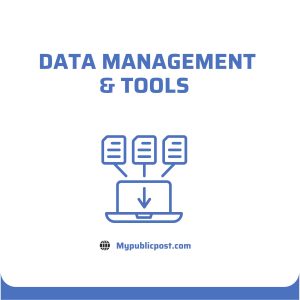There are hundreds of software testing tools available but not all are equal. Most of the tools in the market today focus on automating test execution and reporting defects. These tools provide good reporting on what is tested, what has failed, and the reason for failure. But can you measure how effective your testing process is? Yes, now there are some intelligent system testing tools available that can help you calculate your cost of finding and fixing every defect.
Also, most system testing tools come with integrated solutions to manage defects management in system testing. It allows an organization to assign defects to responsible team members for faster fixing and re-testing cycles and also provides analysis to keep track of the current status of defects etc. You may ask yourself the question of whether these benefits are worth the money or if is it only for large organizations.
Tools for System Testing
Choosing the right software testing tool can be a difficult task since there’re so many tools available in the marketplace. The most important thing is to choose one that matches our requirements. While it is important to understand all the advantages and disadvantages of each tool, sometimes you have time constraints and cannot thoroughly consider the options available.
-
Appium
Appium is an open-source testing solution that enables cross-platform functional testing of mobile apps on both iOS and Android with native, headless browsers. While Appium can be used on its own, it can be integrated with Continuous Integration (CI) and Continuous Delivery (CD) platforms such as Jenkins.
- This integration allows you to access a rich set of enterprise capabilities such as build pipelines, version control systems (VCS), issue tracking systems, and more to better manage your tests.
- One of the most appealing aspects of Appium is that you can use any tooling that works with Selenium WebDriver to manage your test runs. The downside though is the relative lack of support for environments other than Android and iOS.
The Continuous Integration and Continuous Delivery (CI/CD) process are one of the pain points in Appium Testing. Deploying to production may be relatively easy, but it’s not so easy with every new feature or even a bug fix.
- LambdaTest
LambdaTest is a test orchestration and test execution platform to perform manual and automated testing of websites and mobile applications. It supports integrated debugging, locally hosted web testing, and geo-location testing. Users can use different real browsers, OS, and real mobile devices along with emulators and simulators to test their mobile web and native apps.
- The test results are available on an interactive dashboard where the user can see a comprehensive report. LambdaTest offers complete integration through CI/CD platforms such as Jenkins, Asana, Slack, GitLab, Trello, Jira, Bitbucket, etc. – behind Google Cloud Build feature among others.
- This is an application testing platform that offers more than 3000 operating systems, device platforms, and browser combinations around the globe.
-
Tosca
Tosca can simulate virtual services for various purposes, including security tests, performance analysis, and business process verification. Although the user can create their test scenarios using Tosca’s technology, Tosca will also offer some predefined services for the user to choose from.
- Tosca’s workflow is an intuitive and streamlined testing platform that activates the application through test cases via screen recording technology. It automatically records user actions and then the subsequent environmental changes.
- Tosca can identify the change in a few seconds, and a new set of test cases are generated automatically. The test steps are then stored in a human-readable format so that they can be easily shared across different testers without exposing the actual details of the steps.
This method is suitable for all types of applications by integrating record and replay with mocking frameworks that allow users to generate mock data sets in both structured and unstructured formats.
-
Katalon Studio
There is a tremendous diversity of programming languages and methodologies in today’s software environment. While it seems natural to create tests in the language of the developed application, this approach requires multiple skill sets to be built within the team.
- Katalon Studio provides QA engineers with a powerful and unified test automation tool that can generate automated tests in any development language used. Katalon Studio has an intuitive user interface based on the record-playback model of test automation.
- Developers can operate with this tool via manual mode or script mode, while QA engineers work with them in an exploratory testing way. Katalon Studio supports comprehensive UI testing for sensitive web interfaces and web applications.
The easy-to-use solution provides full infrastructure support. Developers can execute tests on all OSs, browsers, and devices, as well as on the cloud or premise.
-
Eggplant
Eggplant is a pioneer in developing software for visual test automation. Since its launch, Eggplant has kept on innovating, working with more than thousands of top software companies to create thousands of functional, performance, and usability tests across different platforms like mobile, web, desktop, and POS.
- Eggplant is an image-based functional testing tool that provides a cloud-based device lab, making a pre-production environment available to application developers during the software development lifecycle.
- Tests are recorded with screenshots and run on the cloud. Eggplant tests are automatic scripts, leaving no need for manual labor; they are easy to create and rerun whenever required. They do not require programming skills, so they can be learned quickly by business analysts and QA engineers.
Eggplant strives to be the most powerful visual testing solution ever created. It enables users with no technical programming skills to add automation, improve efficiency and build better applications with less effort and time.
-
Selenium
Selenium, a powerful web browser automation tool, can be used by developers and testers alike to make testing the delivery cycle more robust. In addition, integration with other frameworks and tools makes it easier for development teams to reap the benefits of continuous testing adoption.
- Selenium is a group of open-source software tools used for web application testing. Selenium automates browsers, which are either on localhost or physically available remote machines. It can be used to create automated tests that simulate a real user’s actions and check the resulting output.
- Selenium Framework contains many testing tools for example automated tests and test scripts. It is free to use and can integrate into any CI/CD flows as well.
Selenium is what it is, but to use the framework effectively, you need to have certain technical knowledge and skills.
-
TestSigma
For System Testing, TestSigma has been defined as the ultimate tool that has gained much popularity in recent years. Using Testsigma you will be able to run your test faster and with fewer resources. Testsigma can also help you in integration tests. You can also integrate this software with an enterprise system that your company might use or even a third-tier vendor software that you’ve contracted.
- Testsigma can also give you a report on how your app performs across multiple platforms, from iOS to Android. Testsigma is always open to ideas and suggestions the team is always ready to listen and welcome any recommendations.
- Testsigma also offers an open-source framework for automation testers, which allows you to add custom functions. For example, you can write your own code to execute acceptance tests and custom algorithms for code coverage.
What’s more, you can also manage various devices and their configurations from one place to ensure all features are covered―even with large test cases, cross-browser issues, or other complicated scenarios.
-
Watir
Watir is a robust Ruby library for automating web browsers. What many people realize is that this tool can be used not only for testing but also for effective and efficient automation of GUI-intensive web applications.
- By leveraging the API’s provided by various web application frameworks, you can easily integrate Watir in your framework-driven environment (such as Rails and Sinatra). With Watir you can automate continuous testing throughout your application lifecycle, including the development, test, and production stages.
- It is an open-source tool that extends the test automation capabilities of popular web browsers, supporting functional and regression testing. Using user-friendly programs, known as ‘Records,’ you can automate your tests using Watir.
Considering Watir, it has been a perfect system testing tool and hence the reputation that it has gained is helping it to compete with Selenium and other tools.
-
TestComplete
TestComplete aims to satisfy all the different testing needs of software development departments. To be more precise, TestComplete is a tool that runs automated tests during the development, staging and production cycles of your software delivery lifecycle. As such, it reflects a different side of SmartBear’s product range – the test management tools for developers and testers.
- TestComplete is a great automation tool for the testing of desktop, web, or mobile applications. It has a simple structure and provides automation coverage of different types of applications. The possibilities that TestComplete offers to execute automated tests are unlimited.
- TestComplete is an enterprise-grade test automation framework that allows teams to track the release cycle of their product. TestComplete enables developers to execute comprehensive and automated functional and regression testing.

(Image Source: QBS Software)
Since TestComplete is a flexible tool with a lot of features and settings, it has got lots of materials which will help you understand the most distinctive functionalities and their capabilities.
-
Rational Functional Tester
RFT is a powerful testing automation tool. For example, this software can be used for end-to-end automation, black-box testing, regression, performance, and stress testing. RFT is one of the oldest, but still useful test automation tools. This tool will cover many test types and automates scripts across multiple platforms – from mobile to web applications.
- It is a mature, feature-rich automation tool that offers extensive test coverage (functional, API, performance, and regression testing). With the visual storyboard editing mode, it comes in handy even if you are a beginner.
- It also allows performing continuous testing and integrating with IBM Quality Manager. The setup can be challenging, but once configured the tool will prove its value by providing efficient test management capabilities and enabling smooth team collaboration.
If you need an automated tool to create and run test cases, but you lack the necessary skill set, then RFT might be a good choice.
-
Unified Functional Tester
UFT supports all the essential test elements, including recording and playback, test libraries, data-driven testing (DDT), parameterization, reusable step definition, and so on. You can use test templates to build professional tests automatically using the interface to automate browsers or applications.
- Advanced features include complex object matching and image recognition. You can use these features to build a complete test cycle from test planning and execution to reporting.
- The tool offers unique feature image-based identification powered by embedded OCR mimicking the way humans recognize objects and thus allows the tester to easily perform system testing.
UFT has several features which make it among the best unified functional testing tools. Furthermore, the accuracy that it provides keeps the testers on edge.
Final Thoughts
Testing tools are the solution at hand to simplify the testing process. With a definite test plan, you can start setting up your system, application, or software testing. Depending on your testing need, you have several options for software testing tools at your disposal. There is no dearth of software tests in the market. It really does depend on your needs. Often bugs are found in rarely used or undocumented functionalities: you choose a testing platform that tests all of them, either manually or automatically, within the testing cycle. A reliable platform for your testing needs can be LambdaTest – which supports over 3000 real-time browsers and OS, that gives you the variety you need and is trusted in over 130+ countries and 1 million developers.





